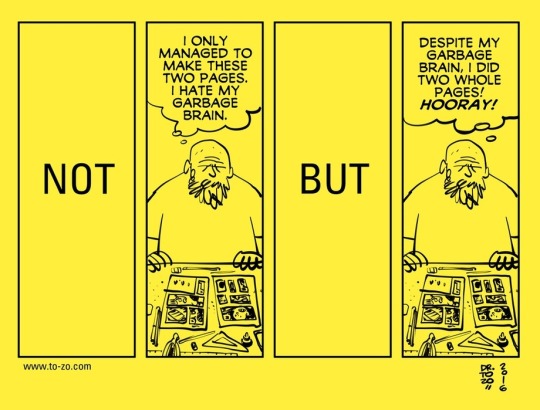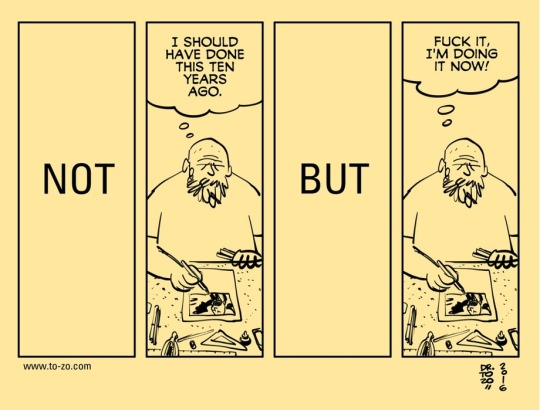Defunct. I post all of my creative stuff to my main @whimsipunk now.
Don't wanna be here? Send us removal request.
Text


“Oh, Frankenstein… Remember, that I am thy creature; I ought to by thy Adam, but I am rather the fallen angel, whom thou drivest from joy for no misdeed.”
4K notes
·
View notes
Text
The Anatomy of Passing Out: When, Why, and How to Write It

Passing out, or syncope, is a loss of consciousness that can play a pivotal role in storytelling, adding drama, suspense, or emotional weight to a scene. Whether it’s due to injury, fear, or exhaustion, the act of fainting can instantly shift the stakes in your story.
But how do you write it convincingly? How do you ensure it’s not overly dramatic or medically inaccurate? In this guide, I’ll walk you through the causes, stages, and aftermath of passing out. By the end, you’ll be able to craft a vivid, realistic fainting scene that enhances your narrative without feeling clichéd or contrived.
2. Common Causes of Passing Out
Characters faint for a variety of reasons, and understanding the common causes can help you decide when and why your character might lose consciousness. Below are the major categories that can lead to fainting, each with their own narrative implications.
Physical Causes
Blood Loss: A sudden drop in blood volume from a wound can cause fainting as the body struggles to maintain circulation and oxygen delivery to the brain.
Dehydration: When the body doesn’t have enough fluids, blood pressure can plummet, leading to dizziness and fainting.
Low Blood Pressure (Hypotension): Characters with chronic low blood pressure may faint after standing up too quickly, due to insufficient blood reaching the brain.
Intense Pain: The body can shut down in response to severe pain, leading to fainting as a protective mechanism.
Heatstroke: Extreme heat can cause the body to overheat, resulting in dehydration and loss of consciousness.
Psychological Causes
Emotional Trauma or Shock: Intense fear, grief, or surprise can trigger a fainting episode, as the brain becomes overwhelmed.
Panic Attacks: The hyperventilation and increased heart rate associated with anxiety attacks can deprive the brain of oxygen, causing a character to faint.
Fear-Induced Fainting (Vasovagal Syncope): This occurs when a character is so afraid that their body’s fight-or-flight response leads to fainting.
Environmental Causes
Lack of Oxygen: Situations like suffocation, high altitudes, or enclosed spaces with poor ventilation can deprive the brain of oxygen and cause fainting.
Poisoning or Toxins: Certain chemicals or gasses (e.g., carbon monoxide) can interfere with the body’s ability to transport oxygen, leading to unconsciousness.
3. The Stages of Passing Out
To write a realistic fainting scene, it’s important to understand the stages of syncope. Fainting is usually a process, and characters will likely experience several key warning signs before they fully lose consciousness.
Pre-Syncope (The Warning Signs)
Before losing consciousness, a character will typically go through a pre-syncope phase. This period can last anywhere from a few seconds to a couple of minutes, and it’s full of physical indicators that something is wrong.
Light-Headedness and Dizziness: A feeling that the world is spinning, which can be exacerbated by movement.
Blurred or Tunnel Vision: The character may notice their vision narrowing or going dark at the edges.
Ringing in the Ears: Often accompanied by a feeling of pressure or muffled hearing.
Weakness in Limbs: The character may feel unsteady, like their legs can’t support them.
Sweating and Nausea: A sudden onset of cold sweats, clamminess, and nausea is common.
Rapid Heartbeat (Tachycardia): The heart races as it tries to maintain blood flow to the brain.
Syncope (The Loss of Consciousness)
When the character faints, the actual loss of consciousness happens quickly, often within seconds of the pre-syncope signs.
The Body Going Limp: The character will crumple to the ground, usually without the ability to break their fall.
Breathing: Breathing continues, but it may be shallow and rapid.
Pulse: While fainting, the heart rate can either slow down dramatically or remain rapid, depending on the cause.
Duration: Most fainting episodes last from a few seconds to a minute or two. Prolonged unconsciousness may indicate a more serious issue.
Post-Syncope (The Recovery)
After a character regains consciousness, they’ll typically feel groggy and disoriented. This phase can last several minutes.
Disorientation: The character may not immediately remember where they are or what happened.
Lingering Dizziness: Standing up too quickly after fainting can trigger another fainting spell.
Nausea and Headache: After waking up, the character might feel sick or develop a headache.
Weakness: Even after regaining consciousness, the body might feel weak or shaky for several hours.
4. The Physical Effects of Fainting
Fainting isn’t just about losing consciousness—there are physical consequences too. Depending on the circumstances, your character may suffer additional injuries from falling, especially if they hit something on the way down.
Impact on the Body
Falling Injuries: When someone faints, they usually drop straight to the ground, often hitting their head or body in the process. Characters may suffer cuts, bruises, or even broken bones.
Head Injuries: Falling and hitting their head on the floor or a nearby object can lead to concussions or more severe trauma.
Scrapes and Bruises: If your character faints on a rough surface or near furniture, they may sustain scrapes, bruises, or other minor injuries.
Physical Vulnerability
Uncontrolled Fall: The character’s body crumples or falls in a heap. Without the ability to brace themselves, they are at risk for further injuries.
Exposed While Unconscious: While fainted, the character is vulnerable to their surroundings. This could lead to danger in the form of attackers, environmental hazards, or secondary injuries from their immediate environment.
Signs to Look For While Unconscious
Shallow Breathing: The character's breathing will typically become shallow or irregular while they’re unconscious.
Pale or Flushed Skin: Depending on the cause of fainting, a character’s skin may become very pale or flushed.
Twitching or Muscle Spasms: In some cases, fainting can be accompanied by brief muscle spasms or jerking movements.
5. Writing Different Types of Fainting
There are different types of fainting, and each can serve a distinct narrative purpose. The way a character faints can help enhance the scene's tension or emotion.
Sudden Collapse
In this case, the character blacks out without any warning. This type of fainting is often caused by sudden physical trauma or exhaustion.
No Warning: The character simply drops, startling both themselves and those around them.
Used in High-Tension Scenes: For example, a character fighting in a battle may suddenly collapse from blood loss, raising the stakes instantly.
Slow and Gradual Fainting
This happens when a character feels themselves fading, usually due to emotional stress or exhaustion.
Internal Monologue: The character might have time to realize something is wrong and reflect on what’s happening before they lose consciousness.
Adds Suspense: The reader is aware that the character is fading but may not know when they’ll drop.
Dramatic Fainting
Some stories call for a more theatrical faint, especially in genres like historical fiction or period dramas.
Exaggerated Swooning: A character might faint from shock or fear, clutching their chest or forehead before collapsing.
Evokes a Specific Tone: This type of fainting works well for dramatic, soap-opera-like scenes where the fainting is part of the tension.
6. Aftermath: How Characters Feel After Waking Up
When your character wakes up from fainting, they’re not going to bounce back immediately. There are often lingering effects that last for minutes—or even hours.
Physical Recovery
Dizziness and Nausea: Characters might feel off-balance or sick to their stomach when they first come around.
Headaches: A headache is a common symptom post-fainting, especially if the character hits their head.
Body Aches: Muscle weakness or stiffness may persist, especially if the character fainted for a long period or in an awkward position.
Emotional and Mental Impact
Confusion: The character may not remember why they fainted or what happened leading up to the event.
Embarrassment: Depending on the situation, fainting can be humiliating, especially if it happened in front of others.
Fear: Characters who faint from emotional shock might be afraid of fainting again or of the situation that caused it.
7. Writing Tips: Making It Believable
Writing a fainting scene can be tricky. If not handled properly, it can come across as melodramatic or unrealistic. Here are some key tips to ensure your fainting scenes are both believable and impactful.
Understand the Cause
First and foremost, ensure that the cause of fainting makes sense in the context of your story. Characters shouldn’t pass out randomly—there should always be a logical reason for it.
Foreshadow the Fainting: If your character is losing blood, suffering from dehydration, or undergoing extreme emotional stress, give subtle clues that they might pass out. Show their discomfort building before they collapse.
Avoid Overuse: Fainting should be reserved for moments of high stakes or significant plot shifts. Using it too often diminishes its impact.
Balance Realism with Drama
While you want your fainting scene to be dramatic, don’t overdo it. Excessively long or theatrical collapses can feel unrealistic.
Keep It Short: Fainting typically happens fast. Avoid dragging the loss of consciousness out for too long, as it can slow down the pacing of your story.
Don’t Always Save the Character in Time: In some cases, let the character hit the ground. This adds realism, especially if they’re fainting due to an injury or traumatic event.
Consider the Aftermath
Make sure to give attention to what happens after the character faints. This part is often overlooked, but it’s important for maintaining realism and continuity.
Lingering Effects: Mention the character’s disorientation, dizziness, or confusion upon waking up. It’s rare for someone to bounce back immediately after fainting.
Reactions of Others: If other characters are present, how do they react? Are they alarmed? Do they rush to help, or are they unsure how to respond?
Avoid Overly Romanticized Fainting
In some genres, fainting is used as a dramatic or romantic plot device, but this can feel outdated and unrealistic. Try to focus on the genuine physical or emotional toll fainting takes on a character.
Stay Away from Clichés: Avoid having your character faint simply to be saved by a love interest. If there’s a romantic element, make sure it’s woven naturally into the plot rather than feeling forced.
8. Common Misconceptions About Fainting
Fainting is often misrepresented in fiction, with exaggerated symptoms or unrealistic recoveries. Here are some common myths about fainting, and the truth behind them.
Myth 1: Fainting Always Comes Without Warning
While some fainting episodes are sudden, most people experience warning signs (lightheadedness, blurred vision) before passing out. This gives the character a chance to notice something is wrong before losing consciousness.
Myth 2: Fainting Is Dramatic and Slow
In reality, fainting happens quickly—usually within a few seconds of the first warning signs. Characters won’t have time for long speeches or dramatic gestures before collapsing.
Myth 3: Characters Instantly Bounce Back
Many stories show characters waking up and being perfectly fine after fainting, but this is rarely the case. Fainting usually leaves people disoriented, weak, or even nauseous for several minutes afterward.
Myth 4: Fainting Is Harmless
In some cases, fainting can indicate a serious medical issue, like heart problems or severe dehydration. If your character is fainting frequently, it should be addressed in the story as a sign of something more severe.
Looking For More Writing Tips And Tricks?
Are you an author looking for writing tips and tricks to better your manuscript? Or do you want to learn about how to get a literary agent, get published and properly market your book? Consider checking out the rest of Quillology with Haya Sameer; a blog dedicated to writing and publishing tips for authors! While you’re at it, don’t forget to head over to my TikTok and Instagram profiles @hayatheauthor to learn more about my WIP and writing journey!
6K notes
·
View notes
Text
me ranting to myself about the parallels and relationships between my OCs (it's 1am)

19K notes
·
View notes
Text
Please make art. You don't have to bare your soul or make a masterpiece, you can be silly and you can be derivative if you want. You don't even have to show it to anyone. Just please make something, it's so good for you
82K notes
·
View notes
Text
the urge to write never leaves but the motivation to do so is a lover lost at war
23K notes
·
View notes
Text
No offense but I think some of you would be a lot happier writing a fictional atlas or encyclopedia instead of a narrative story
73K notes
·
View notes
Text
My top three rules for world building:
How are these bitches eating?
How do these bitches stay warm at night?
Who is paying for all of this bullshit?
37K notes
·
View notes
Text
The Four Sacred Artistic Motives:
-what if this bad thing was good instead
-how about Make-Believe Land can have whatever I want
-would that be fucked up or what
-I think that shit's hot
94K notes
·
View notes
Text
getting older and looking at ur own ocs like okay i know i said you were like 16-19 when i made you at 13 but no fucking way. youre 25 now
51K notes
·
View notes
Text
ppl talk about the difficulty of writing characters smarter than yourself, but the real challenge is writing a character who is funnier than you are
35K notes
·
View notes
Text
i will... draw for fun... the things that..... bring me joy ...

64K notes
·
View notes
Text

[ID/ A shadowy humanoid creature with long, angular limbs and a jack o lantern face holding a large scythe against a pale green background. The pumpkin creature has his head cocked to one side, with a finger placed against his cheek and a mischevious expression. End ID]
He's never done anything wrong in his life, your honour.
Feel free to reblog but please don't repost my art. :)
4 notes
·
View notes
Text
Trying to sell handmade crafts in this economy is so. Like. Hey guys I know we're all broke as fuck but do you want my silly little things. I'm very good at it. For the time it takes to make them + skill + materials it's gonna be 30$ per silly little thing. But also shipping costs 12$ for reasons outside my control so it's actually 42$ now. Sorry. No I really can't charge less than that. Yeah I know. Ok. Bye
60K notes
·
View notes
Text
Tips for writing those gala scenes, from someone who goes to them occasionally:
Generally you unbutton and re-button a suit coat when you sit down and stand up.
You’re supposed to hold wine or champagne glasses by the stem to avoid warming up the liquid inside. A character out of their depth might hold the glass around the sides instead.
When rich/important people forget your name and they’re drunk, they usually just tell you that they don’t remember or completely skip over any opportunity to use your name so they don’t look silly.
A good way to indicate you don’t want to shake someone’s hand at an event is to hold a drink in your right hand (and if you’re a woman, a purse in the other so you definitely can’t shift the glass to another hand and then shake)
Americans who still kiss cheeks as a welcome generally don’t press lips to cheeks, it’s more of a touch of cheek to cheek or even a hover (these days, mostly to avoid smudging a woman’s makeup)
The distinctions between dress codes (black tie, cocktail, etc) are very intricate but obvious to those who know how to look. If you wear a short skirt to a black tie event for example, people would clock that instantly even if the dress itself was very formal. Same thing goes for certain articles of men’s clothing.
Open bars / cash bars at events usually carry limited options. They’re meant to serve lots of people very quickly, so nobody is getting a cosmo or a Manhattan etc.
Members of the press generally aren’t allowed to freely circulate at nicer galas/events without a very good reason. When they do, they need to identify themselves before talking with someone.
91K notes
·
View notes
Text
Two rules for creating anything.
1) Make it weird.
2) Make it with love.
59K notes
·
View notes



